What is knee arthritis?
Arthritis, specifically “osteoarthritis,” is the end result of lifelong injuries, conditions and everyday wear and tear on the musculoskeletal system.
Defined as “joint inflammation,” arthritis is the degeneration of the cartilage and other soft tissue facilitating joint movement. As the joint tissue breaks down, the bones it connects at the joint begin to rub against one another causing friction, inflammation and pain. While there are many different types of arthritis, osteoarthritis is among the most common.
As a load bearing joint, the knee joint is one of the most commonly affected joints in the body. There are multiple causes of knee arthritis, including a genetic predisposition, heavy activity, excessive body weight, and previous injuries or surgery to the joint. Other causes of knee arthritis include generalized inflammatory conditions, such as rheumatoid arthritis and related syndromes.
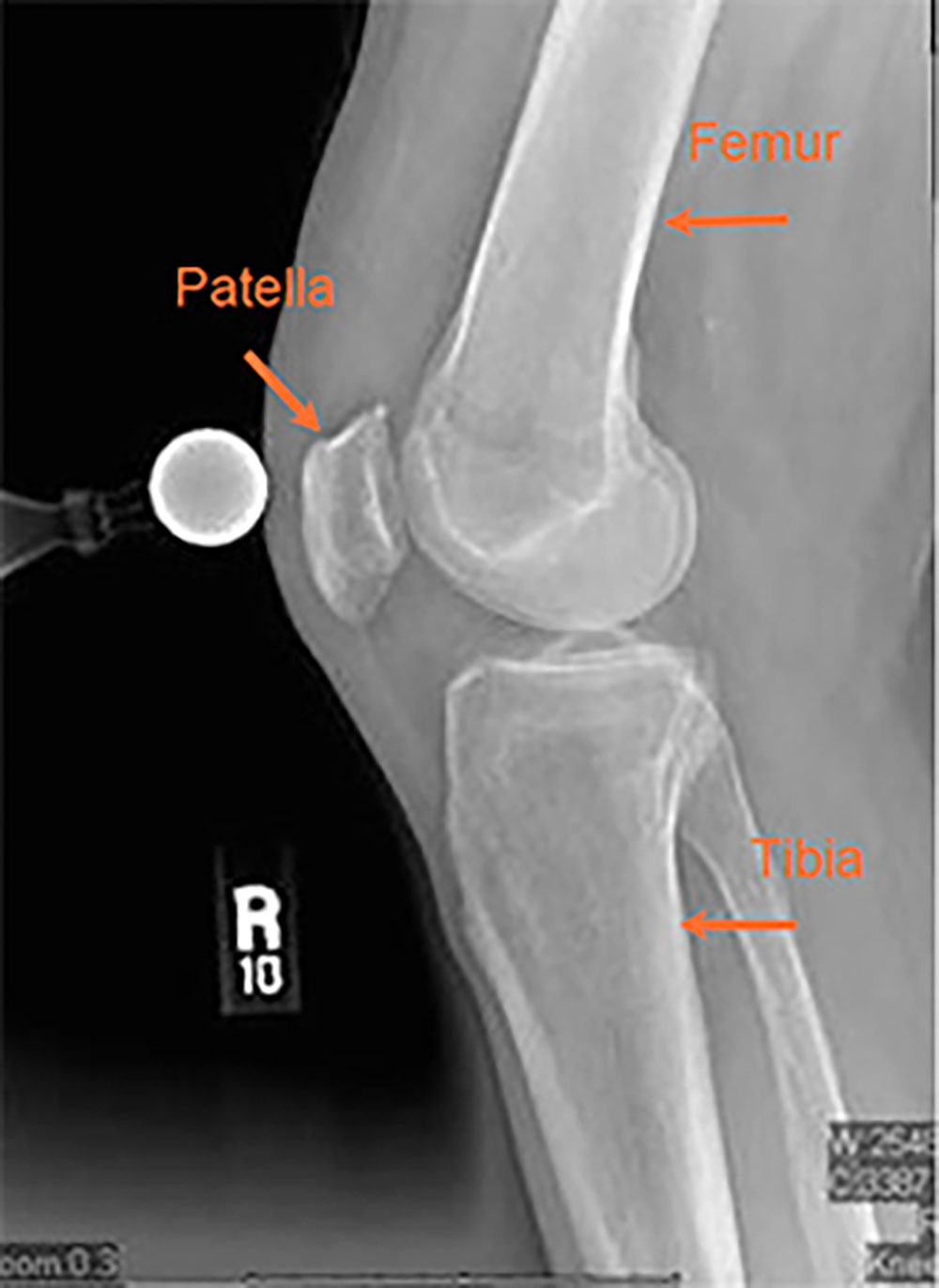
Healthy Knees – visible articular cartilage / joint space
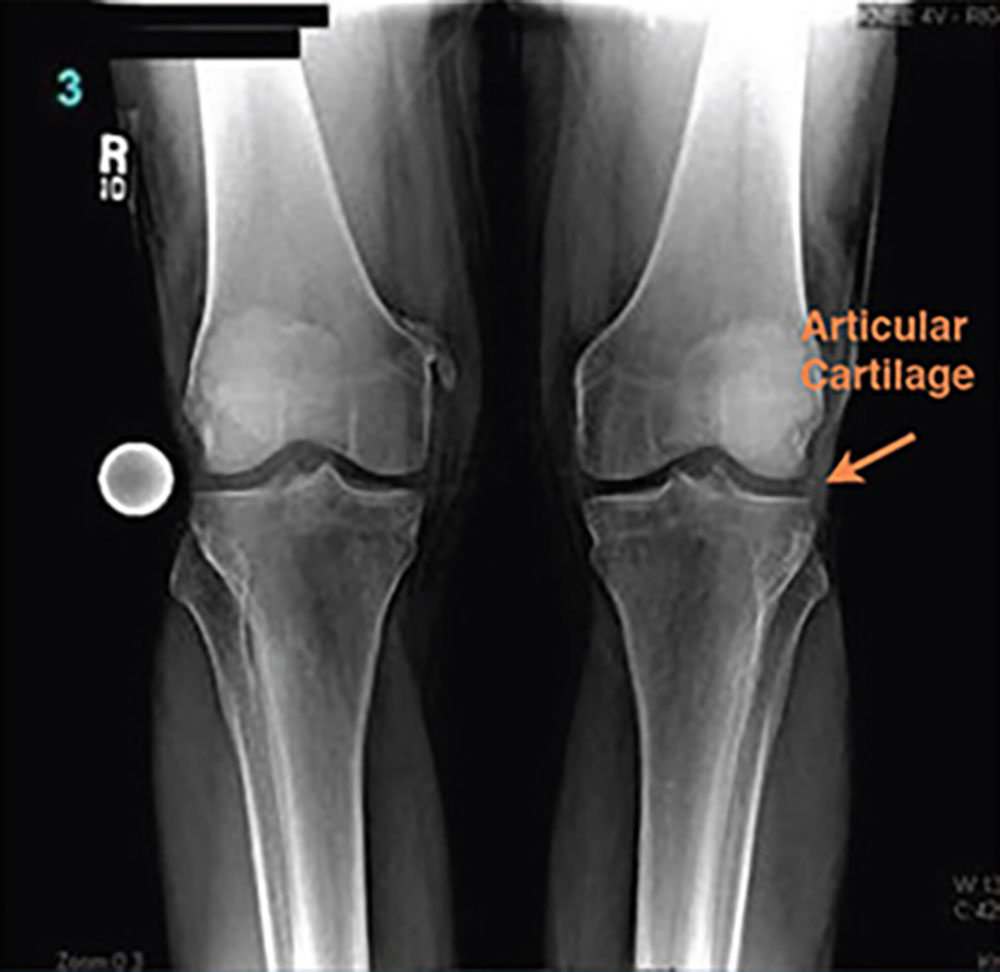
Healthy Knees – visible articular cartilage / joint space
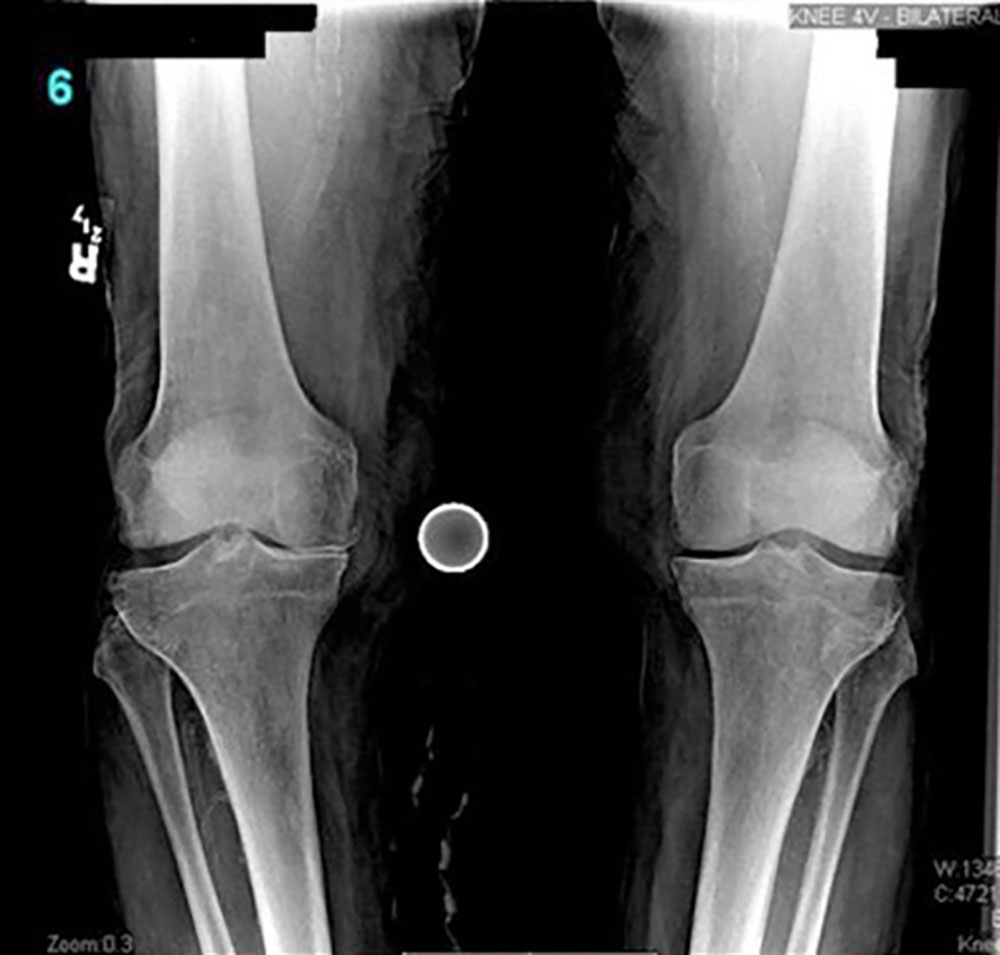
Arthritic Knees – diminished articular cartilage and joint space
As arthritis progresses, the inside aspect of the knee slowly wears out, which may produce a bow-legged deformity.
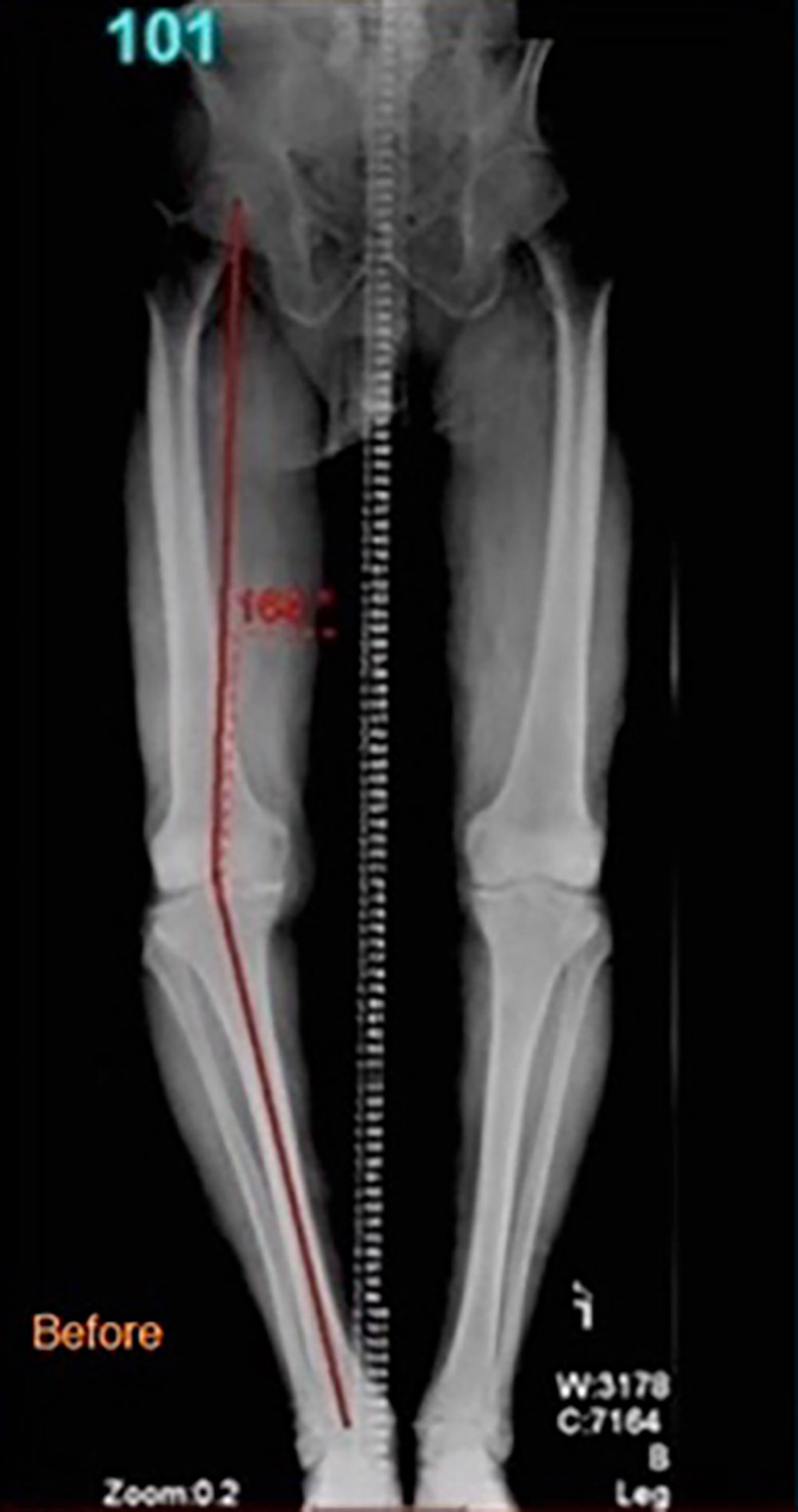
Before example of a varus (bow-legged) case needing correction.
If the arthritis is primarily on the outside aspect of the knee, with time this may produce a “knockkneed” deformity. Knee joint replacement can also help correct these deformities.
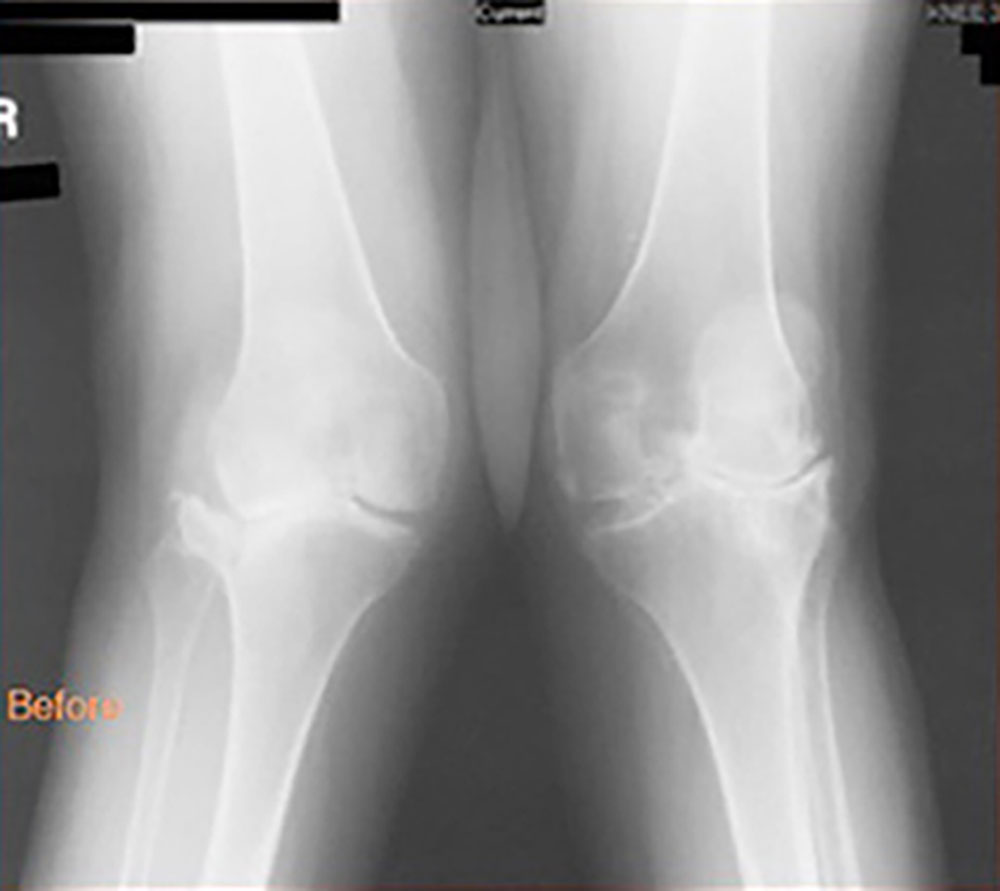
Before example of a valgus (knock-kneed) case needing correction.
A knee replacement procedure can help correct varus (bow-legged) and valgus (knock-kneed) deformity cases, as well as reduce joint pain and further deterioration.
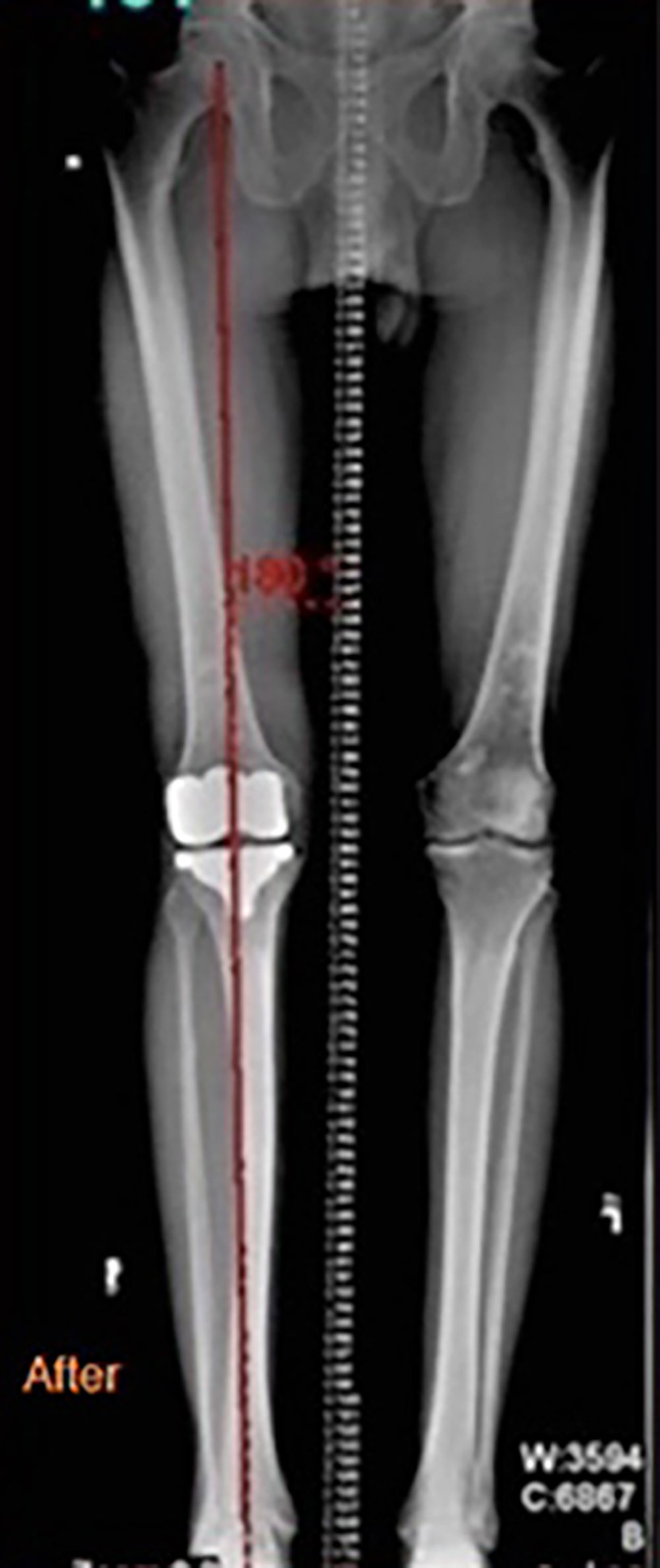
X-ray demonstrating a varus (bow-legged) correction with knee joint replacement surgery.

X-ray demonstrating a valgus (knock-kneed) correction with knee joint replacement surgery.
What is a knee joint replacement?
A knee joint replacement is a procedure that removes degenerative (arthritic) joint tissue and replaces it with prosthetic (artificial) implants or components designed to move as your natural knee joint.
Placed on the surface of the bones meeting at the joint, these new components re-establish a smooth junction to restore the fluid movement that healthy tissue once allowed. A total knee replacement involves femoral, tibial and patellar components. A partial knee replacement addresses only the damaged portion of the joint.

Total Knee Replacement (TKR)

X-ray demonstrating a total knee joint replacement implant (front view).
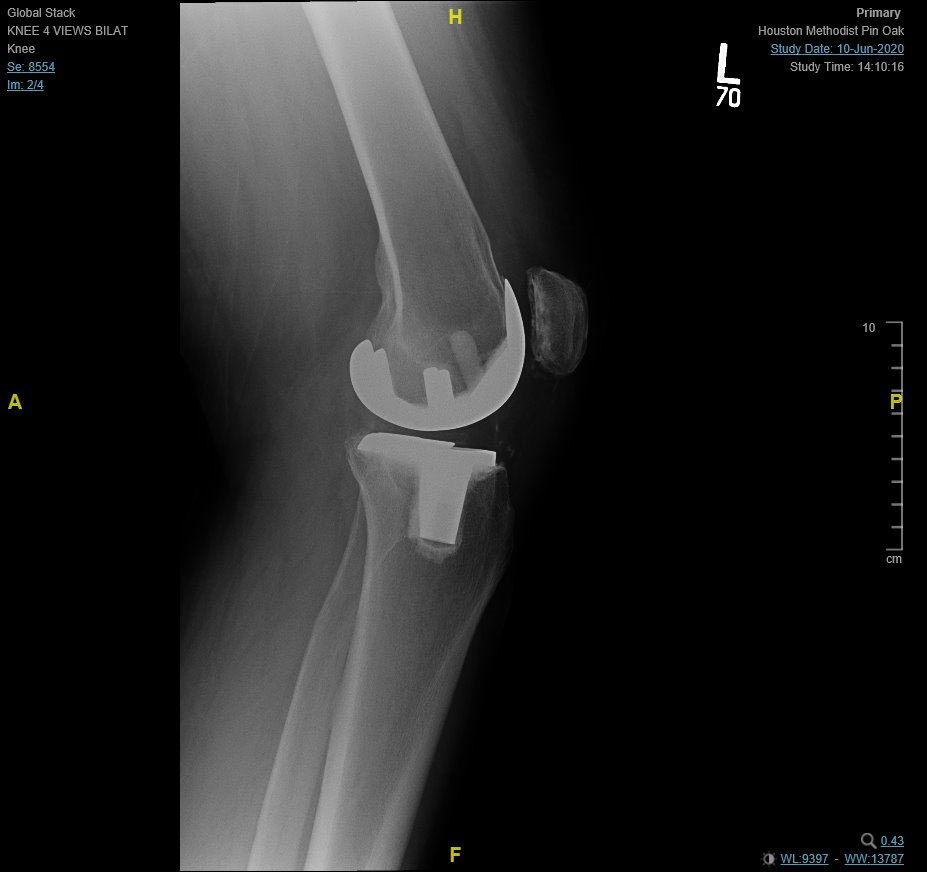
X-ray demonstrating a total knee joint replacement implant (side view).
What is a Partial Knee Replacement (PKR)?
A partial knee replacement, also known as unicompartmental, removes only the damaged area of the knee joint and replaces it with just those components required to restore normal knee function. Healthy tissue is left intact.

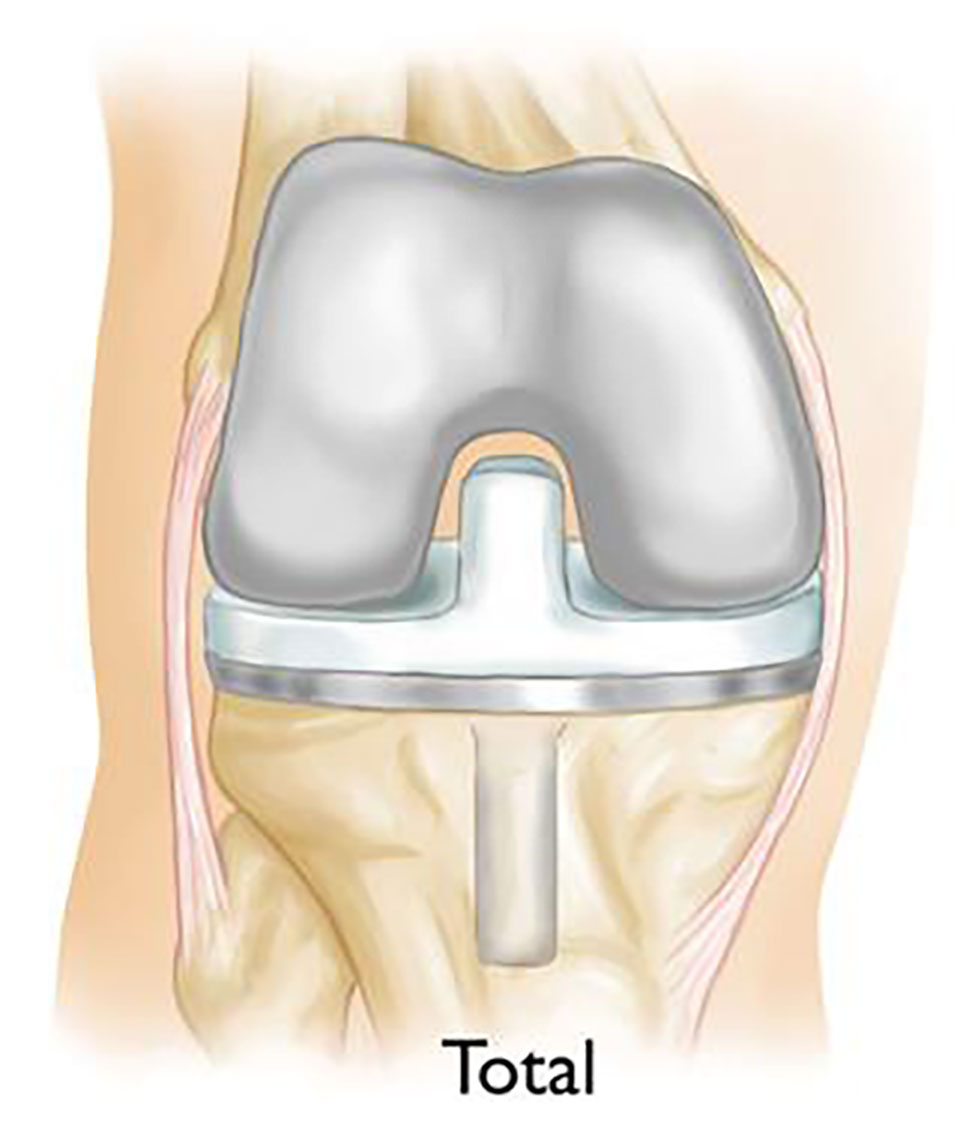
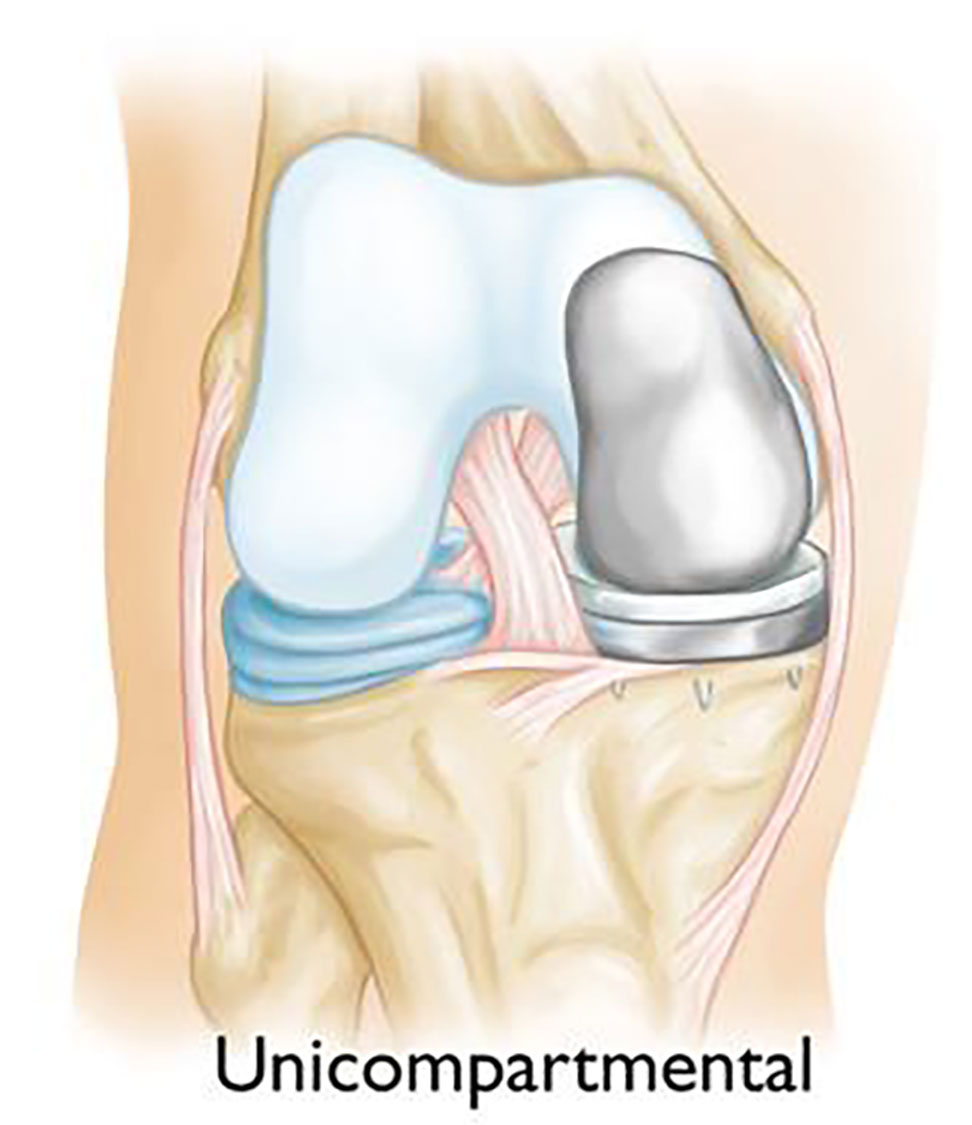
A partial knee replacement is a smaller version of a total knee replacement. It involves replacing only the arthritic/damaged portion of the knee joint.
For example, if the inner (medial) aspect of the knee is worn out, a medial unicompartmental arthroplasty (replacement) can be performed.
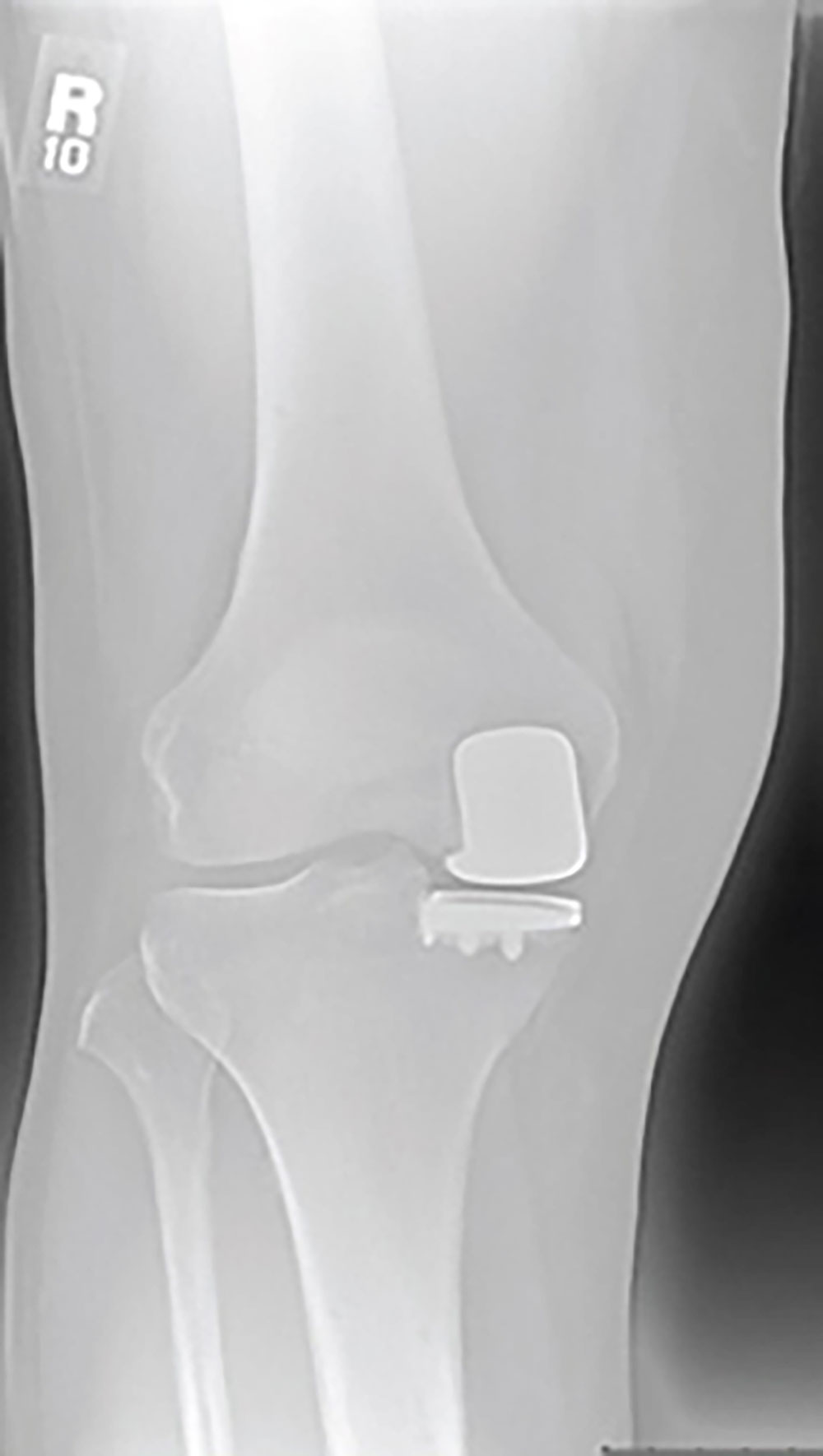
X-ray demonstrating a partial joint replacement implant.

Prosthetics used in PKR procedures.
“In partial knee replacement surgery, accurate placement is the key to the implant working well and lasting a long time,” – Stephen Incavo, M.D.
PKR surgeries have the advantage of maintaining the non-damaged, native part of the knee joint. Because of this, partial knee replacements may be preferable to traditional total knee replacement in the right candidate.
Limitations of Partial Knee Replacements
A disadvantage of PKR is, while the normal portions of the knee joint are maintained, these normal portions may wear out in time, requiring further surgery. Another important limitation of partial knee replacements is that there is statistical evidence that the components do not function as long as total knee replacements. For example, on average, the majority (over 95%) of total knee replacements last for 10-15 years without “wearing out” or loosening. While some available data demonstrates similar longevity for partial knee replacements, other data states that there is a higher wear and/ or loosening rate of these components, as well as a potential for complications rarely seen in knee replacement (e.g., fracture of the tibia). If you are interested in a partial knee replacement you should discuss these issues with your orthopedic surgeon.
Read more about Total Knee Replacement.
Read more about Revision Knee Joint Replacement.
Read more about the Prevention of blood clots and pulmonary embolisms after joint replacement surgery